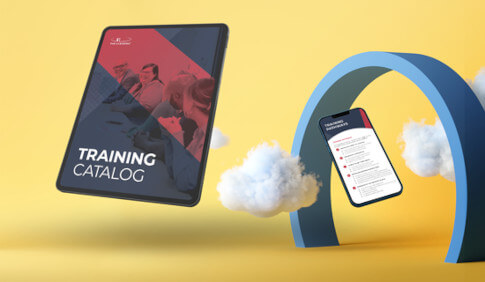Imagine you stepped in to lead an organization, only to find yourself dealing with unhappy customers in a pain-point filled customer experience on one side and senior management mandating major change management to how you do business on the other. The pressure is intense and it is difficult to know which fire to fight first.
This is a real-life situation a recent client found themselves in. With The Clearing’s help, the right plan, and smart use of data, our client was able to not only put out both fires but come out ahead on both fronts. Here’s how.
The Situation
The organization in question is a Federal agency recruitment and on-boarding team (consisting of Human Resources and Security) providing such services to multiple Department of Defense (DoD) and Federal customers. Specifically, they help agencies identify and employ the best-fit candidates.
However, its customers were frustrated with the organization’s hiring processes – particularly how long it took. This resulted in customers selecting other providers to meet their hiring needs. Further, the organization was also faced with a Federal mandate to reduce the time-to-hire from a historical average of over 90 days to under 70 days within one year, and down to 45 days within 5 years.
In order to remain a key shared service provider and trusted partner in this space, the organization sought support in reviewing current business operations, including identifying pain points in the system and how best to improve the customer experience – ideally repairing customer trust along the way. In addition, the organization had perceptions of internal obstacles in the process.
The Plan
We started by identifying available data and using it to find and prioritize the pain points reported by customers. This analysis surfaced three primary pain points:
- Timeline: The length of time it took to move an applicant through the hiring pipeline
- Continuity: The consistency in hiring practices across all customers
- Engagement: The limited customer engagement throughout the hiring process
To better understand these customer pain points, we deployed Performance Data Analysis in the hiring process to understand the workflow. This analysis revealed critical insights into the process, including:
- The mean, median, mode, and standard deviation of time at each step in the hiring process. Some steps naturally take longer than others; however, using data analysis allowed us to identify the outliers and zero in on the issue.
- Which steps presented the biggest challenges.
- The prevalence, and subsequent effects, of errors at each step in the process. These errors are often what slow the process down.
- How the timelines were affected by unnecessary steps and by deviations from standard operating procedures.
Further analysis diagnosed which aspects of the hiring process needed the most attention. It also illuminated how much benefit the organization and customers would realize by addressing any of the pain points. This information, paired with Customer Experience data, was used to create hypotheses around what caused performance and timeliness issues.
We utilized our rapid prototyping process, Amperian Cycle(R), to quickly design solutions to address the problems identified and redesign the hiring process to better meet customer needs and reduce the time-to-hire. This approach allowed our client to drive superior Customer Experience, transform outdated processes, anticipate future customer needs, and re-imagine the way operations are conducted.

The Impact
Most importantly, implementation of the pilot achieved a 22 percent improvement in time-to-hire. In addition, the redesigned hiring process featured a number of initiatives to increase efficiency and transparency, including:
- Dedicated customer teams with a 60% reduction in hand-offs within the process
- Using prescriptive vs. historical reporting to provide real-time views of each step within every hiring action
- Increased quality control practices to reduce costly errors
- A shift from linear to parallel processing of actions to expedite the process
- Increased and proactive customer communication
Finally, the reduction in time-to-hire meant the organization met the mandate to reduce hiring time to 70 days. Even better, the prototyping process identified further opportunities to add efficiency and reduce error, putting the organization on a path to meet its five-year goal.
Those opportunities include:
- Continued reduction of operational silos
- Continued process standardization and transparency
- Additional customer communication
- Increased accountability
Interested in learning more about The Clearing’s Impact Analysis methodologies, customer experience strategies, change management, or believe your organization needs help sharpening processes? I’d love to chat. I can be reached at nathan.toronto@theclearing.com.






 The Clearing’s Employee Experience
Improvement model, adapted from Itam
& Ghosh, 2020, focuses on three objectives:
The Clearing’s Employee Experience
Improvement model, adapted from Itam
& Ghosh, 2020, focuses on three objectives: 














